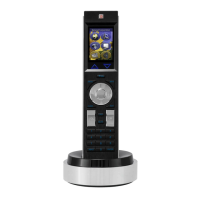Working With Function Codes
144
TPDesign4 Touch Panel Design Software (v2.10 or higher)
Using Power Assign: 1) Clear Channels
One powerful feature of Power Assign is the ability to clear the various function codes from the buttons.
Once you ensure that the desired button or buttons have been selected, all you need to do is bring up the
Power Assign dialog, then:
1. Under Function Code Action, select Clear.
2. Under Function Code Type, select Channel, Address or Level.
3. Click Assign.
Using Power Assign: 2) Assign Codes
Next assign new function codes:
1. Under Function Code Action, select Assign.
2. Under Function Code Type, select Channel, Address or Level.
3. Click Assign.
To use take full advantage of Power Assign, you need to understand the nuances of some of the options
involved:
Begin Assignment At
Ensure Contiguous Code Assignment
Wrap Within Port ID
Begin Assignment At
If you don't check the Begin Assignment At option, the assign operation begins at the first available
channel, just like the standard Auto Assign. When Begin Assignment At is selected you can specify the
starting value of the port and channel, address, or level code.
Function Code Assignment Options
• Begin Assignment At: Sets the button group's starting device and channel codes (if you select the Function
Code Action/Assign option).
• Port: Sets the button group's port numbers (if you select the Function Code Action/Assign
option).
• Function Code: Sets the button group's function codes (if you select the Function Code Action/Assign
option).
• Ensure Contiguous
Code Assignment:
Sets the button group's device and channel code assignments to be contiguous (i.e.
1, 2, 3, etc.)
• Reuse Previously
Assigned Codes:
Sets the codes, starting at either port 1/channel 1 or what you specify in the Start At
field without regard to previously utilized codes.
Code Assignments
• Split Across Port IDs: Tells the program that if the power assignment causes the generated codes to
exceed the allowable range, that it should then continue the code generation at chan-
nel 1 of the next port.
For example, if the set contained two buttons and the first button started at port 1/
channel 4000, then the second button would be assigned to port 2/channel 1, since
only 4000 channel codes are available per port.
• Wrap Within Port ID: Tells the program that if the power assignment causes the generated codes to
exceed the allowable range, that it should then continue the code generation at chan-
nel 1 of the current port.
For example, if the set contained two buttons and the first button started at port 1/
channel 4000, then the second button would be assigned to port 1/channel 1, since
only 4000 channel codes are available per port.

